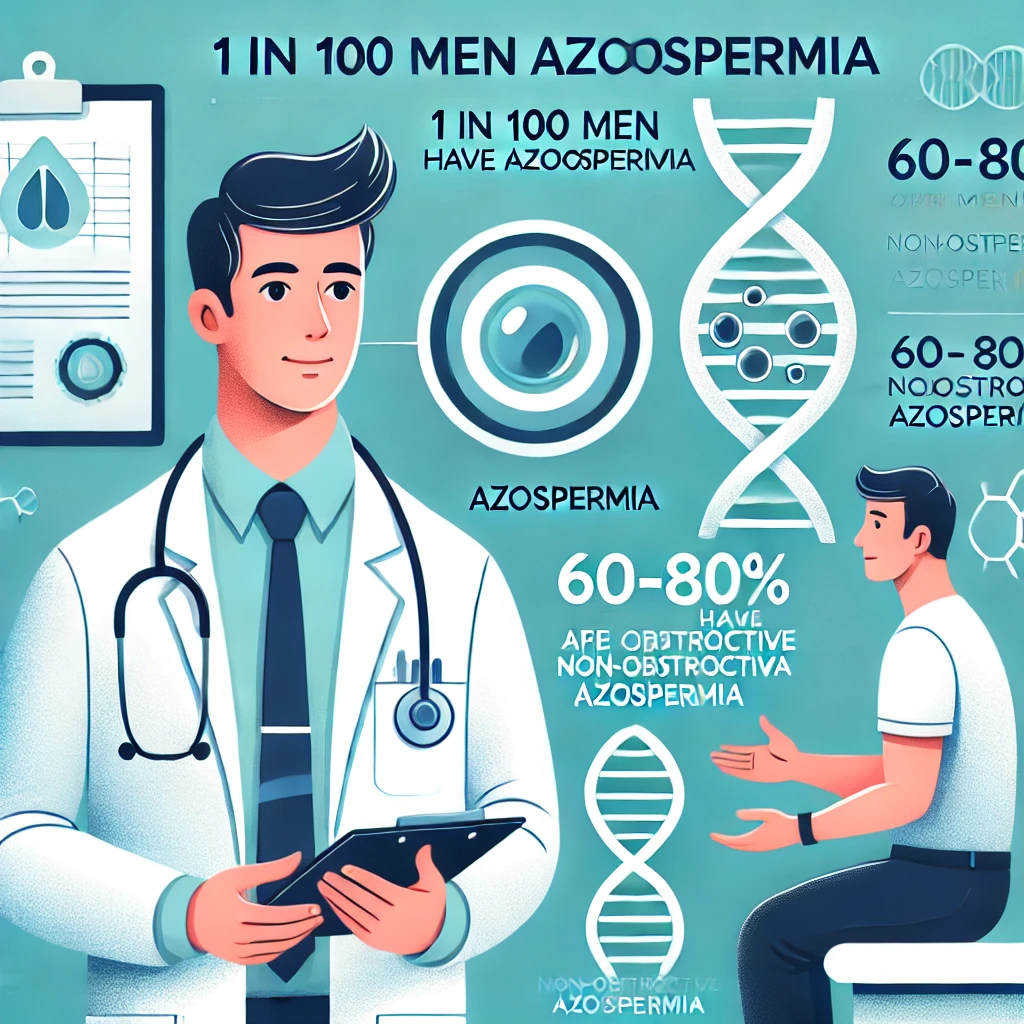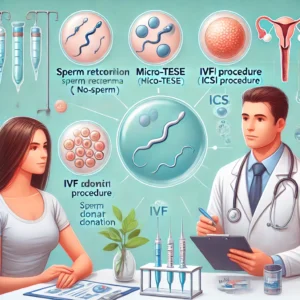
My sperm count is zero how to increase
My Sperm Count is Zero – How to Increase It? Having a zero sperm count, also known as azoospermia, can be a distressing condition for

How many men have non-obstructive azoospermia? Fertility issues affect many couples worldwide, and male infertility is a significant factor in nearly 50% of cases. One of the serious male infertility conditions is non-obstructive azoospermia (NOA), a condition where a man’s semen contains little to no sperm due to poor or absent sperm production. But how common is non-obstructive azoospermia? In this article, we will explore the prevalence, causes, diagnosis, and potential treatment options for NOA.
Non-obstructive azoospermia is different from obstructive azoospermia, where sperm is produced but cannot be ejaculated due to a blockage. In NOA, sperm production itself is impaired due to testicular or hormonal problems. This condition can result from various factors, including genetic conditions, hormonal imbalances, testicular damage, or environmental influences.
Studies suggest that about 1% of all men and 10-15% of infertile men have azoospermia. Of these, around 60-80% have non-obstructive azoospermia rather than obstructive azoospermia. This means that a significant portion of men struggling with infertility may have NOA as an underlying issue.
The prevalence of NOA varies across populations and geographical locations. Some of the key statistics include:
Given these numbers, millions of men worldwide may be dealing with this condition, making it a more common concern than many realize.
There are several reasons why men may develop NOA. Some of the most common causes include:
Genetic abnormalities can significantly impact sperm production. Conditions such as Klinefelter syndrome, Y chromosome microdeletions, and other genetic mutations can lead to NOA.
Hormones like testosterone, follicle-stimulating hormone (FSH), and luteinizing hormone (LH) play crucial roles in sperm production. Any imbalance in these hormones can affect sperm development.
To determine if a man has NOA, doctors perform several tests, including:
A semen analysis is the first step in diagnosing azoospermia. If no sperm are found in the sample, further testing is required.
Blood tests measure testosterone, FSH, and LH levels to assess hormone balance and testicular function.
Doctors may perform genetic tests to check for Y chromosome deletions or other mutations linked to NOA.
A small tissue sample from the testicles is examined to determine if sperm production is occurring at any level.
While NOA is a challenging condition, various treatment options can help men with this condition.
In cases where hormonal imbalances are the cause, hormone replacement therapy or medications like Clomid may stimulate sperm production.
Even in NOA cases, there may be small areas in the testicles producing sperm. Techniques like:
These methods help retrieve sperm for use in assisted reproductive techniques like IVF (in-vitro fertilization) or ICSI (intracytoplasmic sperm injection).
Although medical treatments are essential, certain lifestyle changes may support reproductive health:
If sperm retrieval is successful, assisted reproductive techniques like IVF or ICSI can help men with NOA conceive.
Many men diagnosed with NOA wonder if they will ever be able to father a child. While natural conception may not be possible in most cases, advances in medical science offer hope. With techniques like micro-TESE and ICSI, many men with NOA have successfully become biological fathers.
If sperm retrieval is unsuccessful, couples can explore alternative options such as sperm donation or adoption to build their families.

My Sperm Count is Zero – How to Increase It? Having a zero sperm count, also known as azoospermia, can be a distressing condition for

My Husband Has No Sperm – How Can I Get Pregnant? My husband has no sperm – how can I get pregnant? Discovering that your

Prolistem, a patented formula, has not been evaluated by the Food and Drug Administration. This product is not intended to diagnose, treat, cure, or prevent any disease.
Copyright © 2025 Prolistem®
Prolistem, a patented formula, has not been evaluated by the Food and Drug Administration. This product is not intended to diagnose, treat, cure, or prevent any disease.
Copyright © 2023 Prolistem®